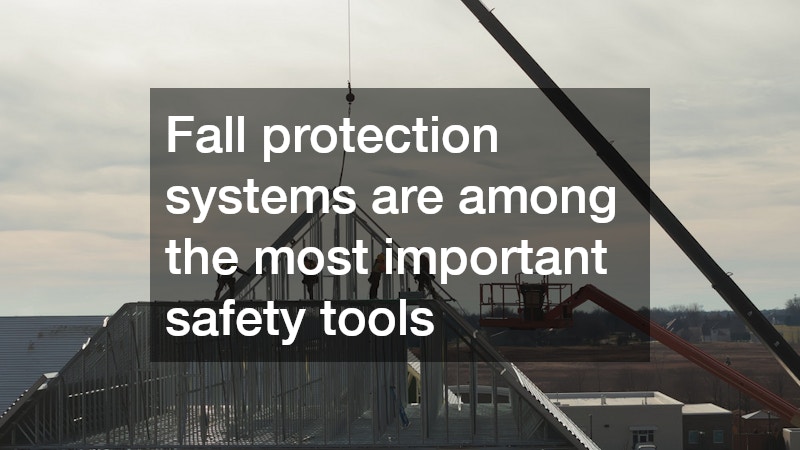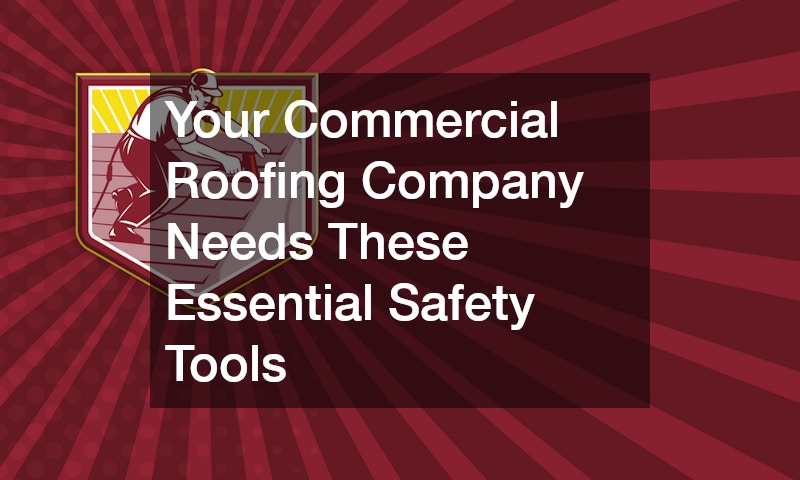Commercial roofers face numerous challenges every day. From the physical demands of the job to the risks associated with working at heights, ensuring safety is paramount. In this article, we will explore the essential safety tools every commercial roofing company should have to protect their workers and maintain a safe working environment.
Personal Protective Equipment (PPE) is Non-Negotiable
First and foremost, any commercial roofing company needs to invest in high-quality personal protective equipment (PPE). Helmets designed to provide workers with adequate head protection are crucial on roofing jobs. With commercial roofers working at significant heights, a simple slip or fall can lead to catastrophic injuries if the proper PPE isn’t worn.
Moreover, roofing boots with non-slip soles help in maintaining firm footing on various types of roofing materials. Gloves are important for protecting hands from sharp objects and hazardous materials, which are commonly encountered while working on roofs. Additionally, protective eyewear is necessary to shield against debris and harmful UV rays that roofers are exposed to daily.
The correct use of PPE reduces the risk of injury significantly, making it an essential part of any commercial roofer’s kit. Companies should provide training on how to properly wear and maintain PPE to maximize its effectiveness. It is crucial for employers to ensure compliance with safety standards and regulations by continuously monitoring the condition and usage of PPE among their workers.
Reliable Fall Protection Systems are Essential
Fall protection systems are among the most important safety tools that commercial roofers should employ. Roofers regularly work at extreme heights, making the risk of falling a prevalent hazard. A reliable fall protection system typically includes harnesses, lanyards, rope grabs, and anchors, all working in unison to prevent fatal accidents.
Employers must ensure these fall protection systems are not only available but are also regularly inspected for any wear and tear. Proper training for workers on how the system functions can drastically reduce fall-related injuries. The Occupational Safety and Health Administration (OSHA) emphasizes the need for compliance with fall protection regulations, making it an industry standard.
Providing workers with the proper tools and training, companies empower roofers to conduct their tasks safely and efficiently. Additionally, employers should actively seek employee feedback on the fall protection equipment’s comfort and ease of use to improve the system continuously. Implementing robust fall protection protocols can mean the difference between life and death, thus deserving undivided attention from any responsible commercial roofing company.
Safety Training Programs are a Must
No set of tools can replace the importance of comprehensive safety training programs. These programs are vital in educating commercial roofers about the potential risks and the correct responses to various safety issues. A well-rounded training program should cover the proper usage of PPE, fall protection systems, and emergency response tactics.
Regular safety drills and refresher courses reinforce the safe practices that every roofer should adhere to. Training programs can also highlight the importance of teamwork, as proper communication and mutual support are crucial in high-risk situations. Furthermore, these programs should evolve to address any new challenges and safety regulations within the industry.
Investing in safety training reflects a company’s commitment to the wellbeing of its employees, ultimately reducing accidents and boosting morale. Workers who understand the risks and know how best to mitigate them are far more confident in their roles. Ongoing training ensures that both new and experienced roofers stay informed about the industry’s best safety practices.
Weather Monitoring Tools are Invaluable
Weather can create unpredictable and dangerous working conditions for commercial roofers. High winds, rain, or extreme temperatures can increase the risks associated with roofing tasks. Having real-time weather monitoring tools can enable companies to make informed decisions about work schedules and safety protocols.
These tools can provide critical information that can prevent unnecessary exposure to adverse weather conditions, thus avoiding potential accidents or health issues. Roofing companies should ensure that their workers are equipped with smartphones or tablets to access weather updates when necessary. Additionally, integrating weather monitoring into the company’s safety procedures ensures everyone is on the same page when it comes to external risks.
Incorporating the latest technology in weather forecasting can also result in cost savings by preventing premature work stoppages or damage to materials. Having this aptitude to predict and adapt to weather conditions empowers commercial roofers to plan ahead, ensuring safety and efficiency. Companies that prioritize weather monitoring demonstrate their leadership and commitment to excellence in safety management.
First Aid Kits and Emergency Readiness
Despite all precautions, accidents can still happen, emphasizing the need for easily accessible first aid kits. Commercial roofers must be prepared to respond to any unexpected cuts, scrapes, or more severe injuries that might occur. Having comprehensive first aid kits on hand ensures immediate care can be administered on-site, potentially preventing minor injuries from turning into major ones.
The availability of these kits should be supplemented with training on first aid procedures for all team members. Basic first aid knowledge is crucial and can be life-saving in critical moments. Employers should regularly check and replenish first aid supplies, keeping them stocked with necessary items.
Beyond first aid supplies, roofing companies should incorporate emergency response plans. Having a well-thought-out plan for contacting emergency services and organizing a swift evacuation if needed can be vital. Being prepared for emergencies not only keeps workers safe but reinforces a culture of safety that can enhance overall productivity and morale.
In conclusion, the safety of commercial roofers should never be compromised. By investing in essential safety tools such as PPE, fall protection systems, training programs, weather monitoring, and first aid kits, companies can ensure the wellbeing of their workers. These tools, combined with a strong safety culture, pave the way for a safer and more secure working environment.

